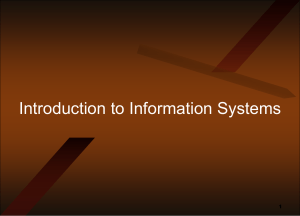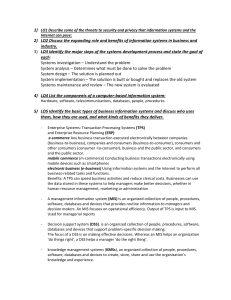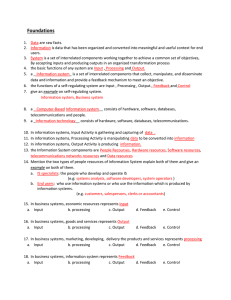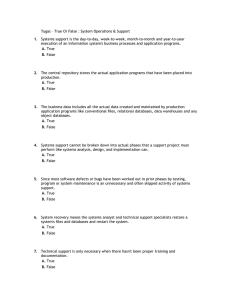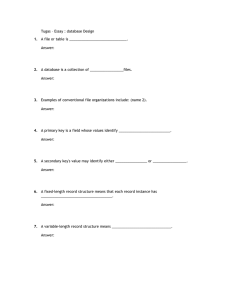فصل1
advertisement
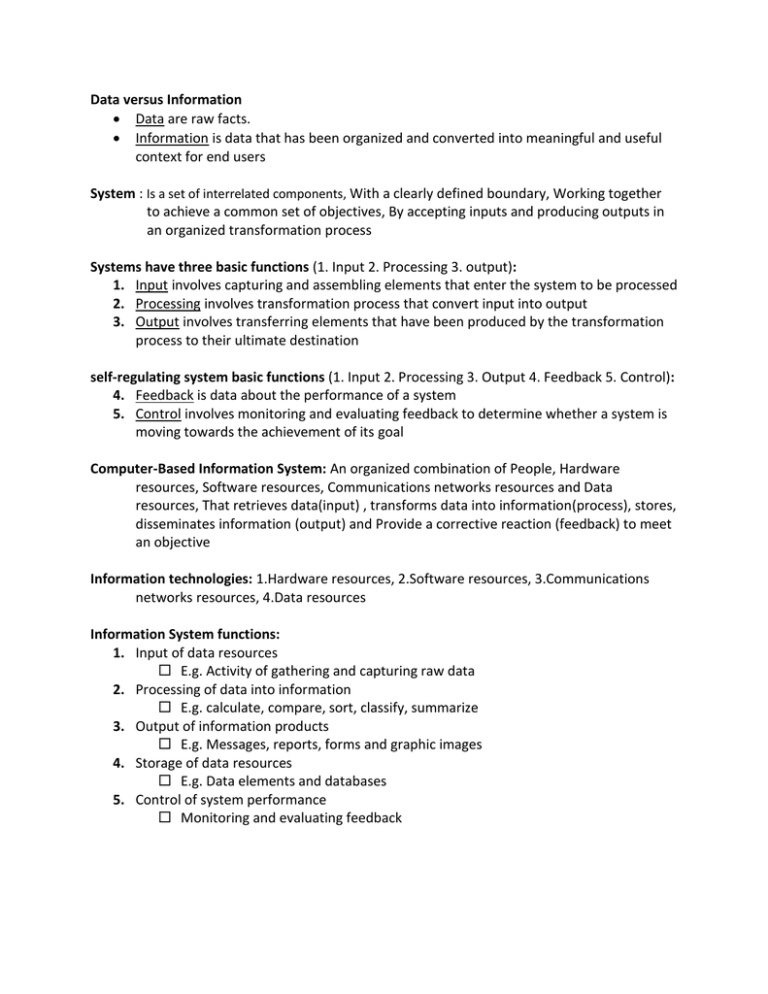
Data versus Information Data are raw facts. Information is data that has been organized and converted into meaningful and useful context for end users System : Is a set of interrelated components, With a clearly defined boundary, Working together to achieve a common set of objectives, By accepting inputs and producing outputs in an organized transformation process Systems have three basic functions (1. Input 2. Processing 3. output): 1. Input involves capturing and assembling elements that enter the system to be processed 2. Processing involves transformation process that convert input into output 3. Output involves transferring elements that have been produced by the transformation process to their ultimate destination self-regulating system basic functions (1. Input 2. Processing 3. Output 4. Feedback 5. Control): 4. Feedback is data about the performance of a system 5. Control involves monitoring and evaluating feedback to determine whether a system is moving towards the achievement of its goal Computer-Based Information System: An organized combination of People, Hardware resources, Software resources, Communications networks resources and Data resources, That retrieves data(input) , transforms data into information(process), stores, disseminates information (output) and Provide a corrective reaction (feedback) to meet an objective Information technologies: 1.Hardware resources, 2.Software resources, 3.Communications networks resources, 4.Data resources Information System functions: 1. Input of data resources E.g. Activity of gathering and capturing raw data 2. Processing of data into information E.g. calculate, compare, sort, classify, summarize 3. Output of information products E.g. Messages, reports, forms and graphic images 4. Storage of data resources E.g. Data elements and databases 5. Control of system performance Monitoring and evaluating feedback Information System Components (1. People Recourses 2.Hardware resources, 3. Software resources, 4. Communications networks resources, 5. Data resources) 1. People Recourses: o IS specialists: the people who develop and operate IS (e.g: systems analysts, software developers, system operators ) o End users: who use information systems or who use the information which is produced by information systems. (e.g. customers, salespersons, clerks or accountants) 2. Hardware Resources: All physical devices used in information processing o Machines, e.g. computers, video monitors, magnetic disk drives, printers, optical scanners o data media, e.g. floppy disks, magnetic tape, optical disks, plastic cards, paper forms. o Peripherals, e.g. keyboard, mouse 3. Software Resources: All information processing instructions including programs and procedures: o Programs, e.g. operating system programs, spreadsheet programs, word processing programs. o Procedures: operating instructions for the people who will use an information system. E.g. data entry procedures, error correction procedures, paycheck distribution procedures. 4. Data Resources o Facts about the business transactions o Processed and organized information o Databases of organized data o E.g. Product descriptions, customer records, employee files, inventory databases. 5. Network Resources o Communications media, e.g. wireless transmission media, wired data transmission media. o communications processors, e.g. routers, switches. etc. o Network infrastructure: network hardware and network software Functions of a business as a system 1. 2. 3. 4. 5. input, economic resources (people, money, materials, machines, land) processing marketing, developing, producing, delivery the products and services output goods (products) and services Feedback information system Control management Types of IS (1. Operations support systems 2. Management Support Systems) 1. Operations support systems (1.Transaction Processing 2.Process Control 3.Enterprise Collaboration Systems ): 1. Transaction Processing Systems : Record and process data resulting from business transactions, Update operational databases, and produce business documents. 2. Process Control Systems : Monitor and control physical processes 3. Enterprise Collaboration Systems: Enhance team and work group communications and collaboration. By using of software tools to support communications, coordination and collaboration among teams and work groups 2. Management Support Systems: Provide information and support for effective decision making by managers (1.Management Information 2.Decision Support 3.Executive Information): 1. Management Information Systems (MIS): Provide reports and displays to managers 2. Decision Support Systems (DSS): Provide interactive ad hoc support for decision making 3. Executive Information Systems (EIS): Provide critical information from MIS, DSS, and other sources for executives and managers
